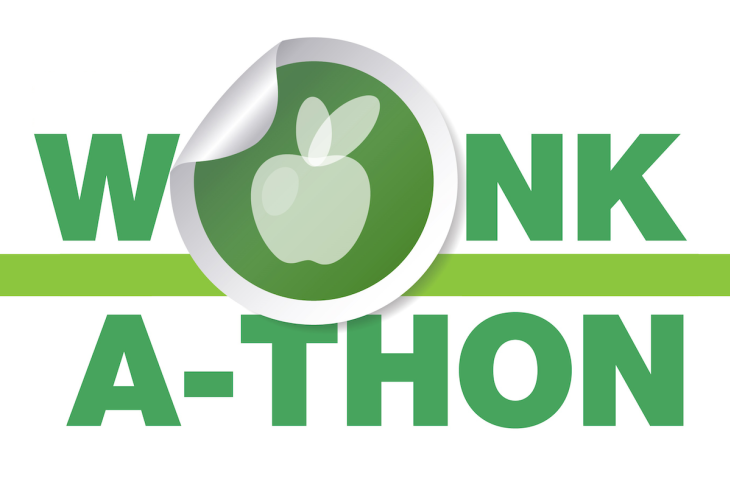The past decade’s shift to significantly higher academic standards and more rigorous assessments means that many more students are now far below grade-level expectations. In recent months and years, there’s been much debate about how best to help such students catch up.
To oversimplify a bit, on one side are educators and advocates who believe that all students can benefit from spending most of their time working on grade-level material. On the other side are those who believe that all students can benefit from “personalization” or “differentiation”—strategies that meet them where they are and then accelerate their progress over time. This is in part a pedagogical debate, but it has implications for school and grade organization, pupil retention, accountability, and more.
This year’s Wonkathon tackles these issues head-on. We asked contributors to address this fundamental and challenging question: What’s the best way to help students who are several grade levels behind?
We received nineteen submissions from policy experts and education practitioners. As expected, there were a wide range of solutions offered, and no two were exactly alike. But there were some common sentiments that emerged.
- Should we “meet students where they are” or “teach them grade-level content”? Why not both?
Many wonks found a way to thread the needle between individualized student growth and grade-level proficiency for all. Methods for doing so included using learning models that integrate personalized needs and on-grade-level mastery,[1] and providing meaningful learning experiences and instructional materials that engage students.[2] Because of the nature of this big-picture, long-term approach, those in this camp tended to address multiple areas for potential improvement: teaching practices, teacher development, instructional materials, school culture, assessment, and accountability.
- If you had to choose one, though, teach students grade-level content
For others, giving students grade-level work and materials came out on top. Specifically, authors proposed focusing on demanding curricula,[3] collecting information on students’ experiences in the classroom,[4] and using particular instructional techniques for below-grade-level readers[5]—all, of course, with high-quality, grade-level content.
- Before we can do anything, we need to build students’ knowledge and assess them appropriately
For students who are several grade levels behind in reading, a few participants suggested building students’ foundational knowledge and giving them tests tied to this knowledge. Approaches for doing so included allowing time for students to pursue personal topics of interest and grow their foundational skills,[6] providing complex subject matter through listening and differentiated instruction through writing tasks,[7] and ensuring that assessments are aligned with what has been taught in the classroom.[8] They also emphasized the well-documented importance of building students’ background knowledge of the world around them to support reading comprehension.
- Intervene sooner rather than later—and get parents involved
Several authors discussed the need to intervene quickly and communicate regularly with parents. One proposed using a tool that enables teachers to engage with parents in their home languages.[9] Another suggested straightforward, face-to-face conversations between administrators, teachers, and parents about their students’ progress.[10] And another recommended multiple research-based strategies to support home and school life: Individualized Education Plans (IEPs), extended days, daily journaling, and consistent feedback to parents.[11]
- But wait! Data can help
Participants also suggested aggregating and examining student data over many years to help diagnose causes of lagging achievement[12] and using a “Multi-Tiered System of Supports”—a data-driven method of structuring and organizing a school’s approach to meeting students’ needs.[13]
- Let's talk about what teachers can do and how we can support them
Finally, some wonks concentrated on the role of teachers and proposed strategies to improve professional learning and development,[14] as well as finding and using teaching practices that best support the development of students who are behind.[15]
—
These nineteen submissions differ in their approaches, but they ultimately agree on one important point: It’s vital that we get more students achieving at or above their grade-level. So what’s the best way to do that? Should we focus on classroom content, instructional materials, parents, data, teachers, or something else? You be the judge by taking our online survey or liking your favorite post on our Twitter thread. The submission with the most votes will be deemed 2019’s “Wisest Wonk.” May their solution be a boon for students who are several grade levels behind.
[1] Beyond the binary: We can foster equity in both opportunity and outcomes, by Abby Javurek
Tailored paths that can combine pre-, on-, and post-grade skills are the solution for students below grade level in math, by Joel Rose
Rigor or personalized learning? Just ask Dr. Seuss., by Jessica Shopoff
[2] Follow schools' leads to embrace personalized learning and academic rigor, by Gwen Baker, Lauren Schwartze, and Bonnie O’Keefe
Closing student achievement gaps requires both rigorous grade-level work and personalized learning, by Britt Neuhaus
[3] Staying on the shelf: Why rigorous new curricula aren't being used, by David Steiner
[4] To help students who are behind, find out if their assignments match their goals, by Daniel Weisberg
[5] From Play-doh to Plato: All students need to grapple with grade-level text, by Harriett Janetos
[6] If we want to accelerate student learning, we need to redesign the school day, by David Liben and Meredith Liben
[7] To help students students who are several "grade levels" behind in reading, focus on building—and assessing—students' knowledge, by Natalie Wexler
[8] To ensure success for all students, state assessment makers must be learners, too, by Jessica Baghian
[9] Engaging families, early and often, is the best way to help students who are several grade levels behind, by Vidya Sundaram and Elisabeth O’Bryon
[10] Parent communication, not data, is the problem when it comes to below-grade-level students, by Lisa Murdock
[11] To help students who are several grade levels behind, implement IEPs in elementary and middle school, by Charles Ogundimu
[12] The best way to help students who are several grade levels behind is to do a better job of following their progress, or lack of it, in the long term, by Barbara Gottschalk
[13] Driving learning for all students: A framework for Multi-Tiered Systems of Support, by Bonnie Hain and Laura Slover
[14] Fostering teacher quality and expertise is the best way to help students who are several grade levels behind, by Candice McQueen
Teachers and curricula aren't enough for below-grade-level standards. They also require scalable strategies tailored to their needs, by Jessica Varevice
[15] Why struggling students remain below grade level, and how to help them, by Michael Goldstein




